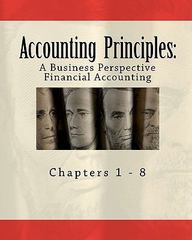Question
Please provide help and solutions with full working out for all questions ASAP. The part about wages and expected utility changing based on effort has
Please provide help and solutions with full working out for all questions ASAP. The part about wages and expected utility changing based on effort has tripped me up and I am stuck. How would you answer questions based on different expected utility and reservation utility?
An employer is designing a wage contract. There are two states, ? and ?. In state ? revenue is 400, and in state ? revenue is 900. The employee can choose to exert one of three effort levels: low effort, high effort, or very high effort. If the employee exerts a low level of effort, the probability of state ? is 0.6. If the employee exerts a high level of effort, the probability of state ? is 0.4. If the employee exerts a very high level of effort, the probability of state ? is 0.1. The employee maximises expected utility, with utility for wages ?(?) = ??. Low effort decreases the employee's expected utility by ?? = 4 units, high effort decreases expected utility by ?? = 6 units, and very high effort decreases expected utility by ?? = 10 units. By not accepting the contract, the employee gets reservation utility of ? = 10 units. (a) Assuming perfect information, explain and derive the contracts that optimally implement each level of effort. Find the optimal contract. (8 marks) Now assume asymmetric information, in the sense that effort is unobservable. (b) Explain and derive the contract that optimally implements low effort under asymmetric information. (2 marks) (c) Explain and derive the contract that optimally implements high effort under asymmetric information. (8 marks) (d) Explain and derive the contract that optimally implements very high effort under asymmetric information. (8 marks) (e) Find the optimal contract under asymmetric information. (4 marks)

Step by Step Solution
There are 3 Steps involved in it
Step: 1

Get Instant Access to Expert-Tailored Solutions
See step-by-step solutions with expert insights and AI powered tools for academic success
Step: 2

Step: 3

Ace Your Homework with AI
Get the answers you need in no time with our AI-driven, step-by-step assistance
Get Started


